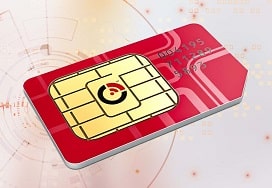Esim Vodacom Prepaid eSIM Technology for IoT Use
Dual Sim Vs Esim eUICC Functionality and Operation Overview
The integration of the Internet of Things (IoT) into smart grids marks a big shift in how energy distribution and administration are approached. This transition has risen because of the rising calls for for energy effectivity, reliability, and sustainability. Ensuring reliable IoT connectivity is crucial to the profitable implementation of smart grids as a result of these networks rely heavily on real-time information for decision-making and operational efficiency.

As smart grids depend on an enormous network of devices, including smart meters, sensors, and management techniques, maintaining strong connectivity amongst them is crucial. With quite a few endpoints involved, the problem is to create a cohesive system the place information may be transmitted seamlessly with out interruptions. Any disruption in connectivity can lead to various issues, from energy outages to inefficient energy management.
One key to dependable IoT connectivity in smart grids revolves round optimizing community structure. A well-planned community can substantially decrease points of failure. Employing a layered network strategy can improve reliability by segregating different varieties of communication. For occasion, separating control alerts from data transmission helps make positive that crucial instructions remain unaffected by congestion within the knowledge channels.
Utilizing redundant communication pathways provides one other layer of safety for connectivity. When a main communication route experiences difficulties, different pathways can be employed to keep up consistent information circulate. This redundancy can effectively mitigate risks, notably during peak utilization instances or surprising network congestion (Esim Vs Normal Sim). The deployment of backup connections ensures that information remains accessible no matter challenges that will arise.
Dual Sim Vs Esim eUICC/eSIM Solutions for IoT
Moreover, adopting advanced communication protocols that specifically cater to IoT purposes can foster reliable connectivity. Protocols such as MQTT (Message Queuing Telemetry Transport) and CoAP (Constrained Application Protocol) are designed to handle intermittent connections and decrease the amount of knowledge transmitted. By using these light-weight protocols, smart grids can improve their effectivity and reliability, decreasing the probability of knowledge loss throughout transmission.
Another very important facet is the function of edge computing. Rather than sending all data to a centralized cloud server for processing, data can be processed nearer to its source through native edge devices. This reduces latency and enhances the speed of data evaluation, allowing for instant responses to changing conditions within the grid. By distributing processing obligations, edge computing can significantly lower the load on central networks, reinforcing the general reliability of IoT connectivity.
Furthermore, enabling system authentication and encryption is essential for securing IoT connections within smart grids. As the dimensions of IoT gadgets grows, so does the potential for cyberattacks geared toward interrupting connectivity. Implementing stringent authentication mechanisms ensures that only approved devices can talk throughout the grid. Adding encryption safeguards knowledge integrity and confidentiality as it circulates across the network.
Dual Sim Vs Esim Impact of eSIM on IoT
Regular monitoring and maintenance of the network infrastructure is crucial for guaranteeing reliability. Deploying real-time monitoring instruments may help establish weak points throughout the community before they lead to important failures. Continuous evaluation of community performance allows for proactive measures to be taken, ensuring that genuine issues are addressed promptly and don't escalate into main disruptions.
Scalability must also be a consideration when establishing reliable IoT connectivity. Smart grids will proceed to evolve with innovations in know-how, rising the variety more tips here of linked gadgets. Designing a network that may accommodate future development with out compromising performance is important. Implementing modular techniques that permit for easy integration of extra units ensures ongoing reliability as the infrastructure expands.
Which Networks Support Esim South Africa What is eUICC?
Collaboration amongst stakeholders—such as utilities, know-how providers, and regulators—adds important worth to the method of guaranteeing connectivity. By taking a unified approach, these parties can develop standards that promote interoperability among various units and techniques. Such standards can facilitate a cohesive environment where completely different components can communicate successfully, thereby enhancing general connectivity.
Education and training additionally play crucial roles in reinforcing IoT reliability within smart grids. Ensuring that personnel who manage these networks are correctly educated can prevent operational errors that may lead to connectivity issues. Providing ongoing schooling regarding rising technologies, protocols, and security measures ensures that employees stay informed and able to addressing connectivity challenges as they arise.
Euicc Vs Uicc Meaning of eSIM and eUICC
In conclusion, achieving dependable IoT connectivity in smart grids is a multifaceted endeavor that requires the combination of advanced technologies, robust network design, and collaborative efforts among stakeholders. By focusing on community structure, adopting acceptable communication protocols, leveraging edge computing, making certain device safety, conducting common maintenance, selling scalability, and facilitating schooling, stakeholders can collectively guarantee resilience in opposition to disruptions. The future of energy administration hinges on the reliability of those connections, making it important for ongoing improvements and diversifications to meet the demands of an ever-evolving landscape.
- Implement robust network protocols like MQTT and CoAP to streamline communication and enhance information transmission efficiency in smart grids.
- Utilize edge computing to course of information close to the supply, lowering latency and minimizing bandwidth usage for IoT units.
- Regularly perform safety assessments and updates to safeguard devices and data against potential cyber threats throughout the network.
- Integrate redundant communication pathways to take care of connectivity in case of network failures or outages, guaranteeing uninterrupted service.
- Deploy superior data analytics tools to monitor traffic patterns and system performance, enabling proactive maintenance and timely concern resolution.
- Leverage mesh networking to enhance coverage and reliability, allowing units to speak even if some nodes go offline.
- Establish clear and standardized protocols for gadget interoperability, facilitating seamless integration of assorted IoT units in the smart grid ecosystem.
- Invest in high quality hardware parts with built-in resilience, guaranteeing that devices can stand up to environmental challenges while maintaining connectivity.
- Consider the implementation of low-power wide-area networks (LPWAN) for long-range communications, particularly in remote or rural areas.
- Educate stakeholders on the significance of connectivity methods, fostering collaboration between utility suppliers, manufacturers, and technology partners.undefinedWhat are the key components that affect IoT connectivity in smart grids?
Key factors include community coverage, latency, bandwidth, and security protocols. Which Networks Support Esim South Africa. Ensuring that these components are optimized can result in more stable and dependable connectivity throughout gadgets.
How can I improve network coverage for IoT gadgets in smart grids?
Difference Between Esim And Euicc Importance of eUICC Explained
Improving network coverage may be achieved by deploying further low-power wide-area community (LPWAN) technologies, strategically putting repeaters, and using superior antennas to increase range and signal energy.
What position does data security play in IoT connectivity for smart grids?
Data safety is important to protect delicate data and preserve the integrity of the system. Implementing sturdy encryption, regular software updates, and secure authentication processes can mitigate dangers.
How can edge computing enhance IoT connectivity in smart grids?
Which Networks Support Esim South Africa Embedded SIM for Internet of Things
Edge computing processes knowledge nearer to the source, decreasing latency and bandwidth usage. It allows for real-time analytics and decision-making, considerably bettering the responsiveness and reliability of the system.
What types of communication protocols are finest for IoT in smart grids?
Protocols corresponding to MQTT, CoAP, and LoRaWAN are generally used because they are lightweight, efficient, and designed for low-power devices, providing robust connectivity for IoT functions in smart grids (Is Esim Available In South Africa).

How do I monitor the performance of IoT connectivity in smart grids?
Difference Between Esim And Euicc Difference Between eSIM and eUICC
Utilize community monitoring tools that present analytics on gadget communication, latency, and throughput. Regularly reviewing these metrics helps in figuring out and addressing connectivity points promptly.

What measures can be taken to make sure scalability in IoT networks for smart grids?
Euicc Vs Esim Multi-IMSI vs eUICC Comparison
Designing a modular architecture, utilizing cloud-based solutions, and adopting standardized protocols can facilitate scalability. This ensures that the community can efficiently help an rising variety of devices over time.

How can redundancy enhance the reliability of IoT connectivity in smart grids?
Esim Vodacom Sa What is eUICC Explained?
Implementing redundancy allows for various pathways for information transmission, ensuring that if one connection fails, others can take over. This minimizes downtime and enhances general reliability.
What challenges do legacy methods current to IoT connectivity in smart grids?
Legacy methods often lack interoperability with modern IoT units, can limit scalability, and should look at these guys not help the most recent security protocols. Upgrading these techniques or creating efficient integration methods can mitigate these challenges.
Dual Sim Vs Esim Embedded SIM (eSIM) vs Integrated SIM
How essential is interoperability amongst IoT devices in smart grids?
Interoperability is crucial for seamless communication between diverse units and techniques. Ensuring compatibility through standardized protocols and interfaces helps to create a more efficient and dependable smart grid community.